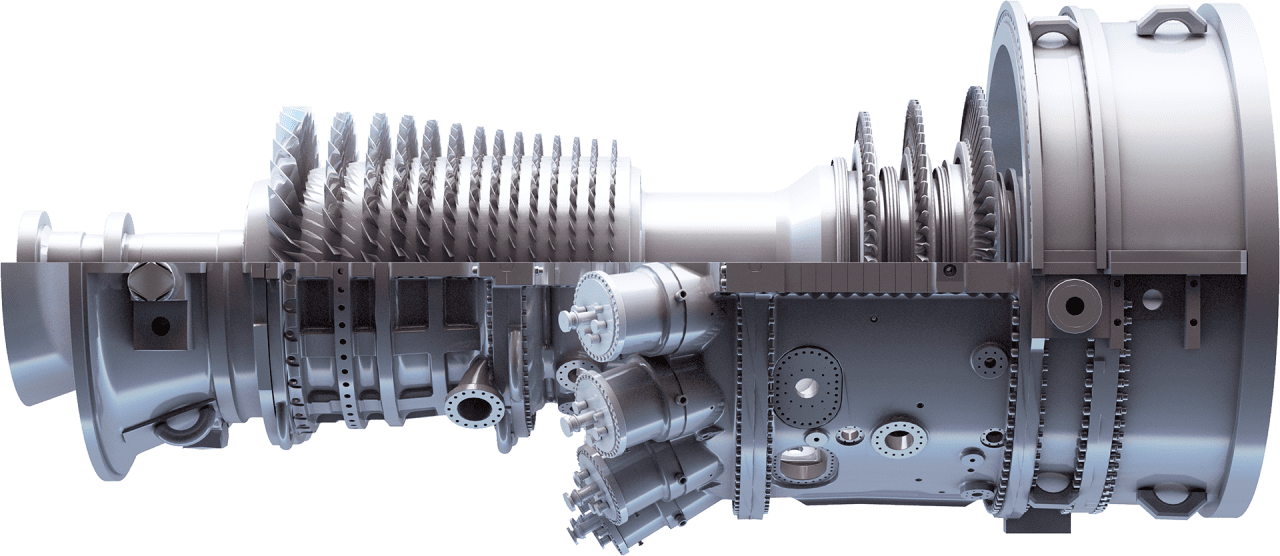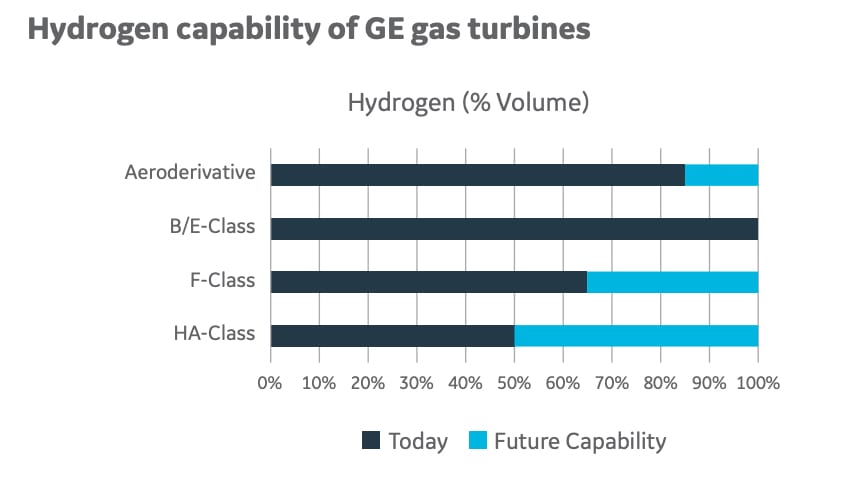GE Will Pilot F-Class Dual-Fuel Gas and Hydrogen Plant in Australia
The post GE Will Pilot F-Class Dual-Fuel Gas and Hydrogen Plant in Australia appeared first on POWER Magazine.

GE will supply a 50-Hz F-class gas turbine that is capable of combusting natural gas and hydrogen-blended fuels at EnergyAustralia's 316-MW Tallawarra B Power Station in New South Wales (NSW), Australia, in a project that will demonstrate how the coal-rich nation could accelerate its energy transition using gas.
GE on June 16 said CLP Group subsidiary EnergyAustralia, a major generator and retailer serving eastern Australia, ordered a GE 9F.05 gas turbine to power the new Tallawarra B Power Station. The project will be sited at EnergyAustralia's 435-MW Tallawarra gas-fired station, a 2009-built combined cycle station located in Yallah on the western shore of Lake Illawarra that replaced a 320-MW coal-fired power station.
The new plant, EnergyAustralia's first large gas-fired project since Tallawarra was completed 12 years ago, responds to the Australian government's move last September to reset domestic power and gas priorities and incentivize new private sector-built generation.
Prime Minister Scott Morrison has said the nation's Gas-Fired Recovery" strategy is especially critical because the 1.7-GW Liddell coal-fired power station in NSW's Hunter Valley region is slated to close in 2023. Morrison, notably, gave the private sector until the end of April 2021 to reach final investment decisions on 1 GW of dispatchable capacity, with a commitment for generation in time for summer 2023-2024.
A Decarbonization PathwayTallawarra B, which is backed with A$83 million in funding from the NSW state and federal governments, is envisioned as an open-cycle hydrogen and gas-capable peaker" that will be operational in time for the summer of 2023-24, following Liddell's anticipated closure, GE said.
Under a funding agreement signed on May 3, EnergyAustralia will offer to buy green hydrogen up to 5% of the plant's fuel use from 2025 and offset direct carbon emissions from the project over its operational life.
That means the project will provide firm capacity on a continuous basis and paves the way for additional cleaner energy sources to enter the system," said Catherine Tanna, managing director of EnergyAustralia in a statement. We are leading the sector by building the first net-zero carbon emissions hydrogen and gas capable power plant in New South Wales."
GE plans to build the plant in consortium with Engineering, Procurement and Construction (EPC) firm Clough. Serving as the project's equipment provider, GE will also supply an A78 generator, an exhaust stack with an innovative Plume Dispersion Device, a generator step-up transformer, and the Mark VIe control system, and gas turbine accessories packaged in modules for the project, which it said will reduce on-site installation work while offering simpler and faster serviceability for the plant operator."
EnergyAustralia, meanwhile, is also slated to invest in engineering studies examining upgrades for Tallawarra B so that it can use more green hydrogen in its fuel mix in the future," GE said.
A New Realm for the F-ClassFor GE, the project is especially important given its recently announced commitment to lead a decade of action" to decarbonize the power sector. The pilot project at Tallawarra B Power Station demonstrates the substantive role that gas technologies can play in reducing carbon emissions, ensuring reliable electrical supply, and fighting climate change," said Scott Strazik, CEO of GE Power.
However, the project also represents a leap for the U.S. power technology manufacturer's 9F.05 gas turbine, its most advanced F-class machine, including for new use cases, and, pivotally, new markets. GE put the first F-class machine online in 1991, and while it says it has since received more than 450 GE 9F gas turbine orders, Tallawarra B will be its first 9F.05 gas turbine built in Asia.
For more see POWER's interactive feature: A Brief History of GE Gas Turbines |
The pilot's dual-fuel scope with hydrogen is also notable for the F-class. Last October, the company secured its first HA-class hydrogen gas power deal with Long Ridge Energy Terminal, a company that will transition its 485-MW combined cycle power plant to 100% green hydrogen within the next decade. Long Ridge will become the first purpose-built hydrogen-burning power plant in the U.S., GE said.
And earlier last year, the company also agreed to form a joint working group to explore, assess, and develop technology and service options for decarbonization of German generation giant Uniper's 4-GW GE gas turbine fleet. Under that agreement, the two companies expect to work out a detailed roadmap that may entail hydrogen-friendly upgrades to all GE gas turbines and compressors at the German generation giant's gas power plants and gas storage facilities across Europe.
GE Working on Advanced DLN Technologies for F-ClassAccording to Jeff Goldmeer, Emergent Technologies director at GE Gas Power, all of GE's gas turbines have some hydrogen capability, and at least 75 have used fuels with varying concentrations of hydrogen over the last 30 years. That includes a group of 25 gas turbines that have operated on fuels with at least 50% hydrogen by volume, he said.
The specific amount that can be burned in any particular gas turbine model depends on several factors, but most importantly on the combustion system," he explained to POWER on Monday.
 Hydrogen capability of GE gas turbines. Courtesy: GE
Hydrogen capability of GE gas turbines. Courtesy: GEGE, which in the 1990s pioneered a lean premix combustion system known as Dry Low NOx (DLN), has refined the technology and released advancements, including the DLN2.6+ combustion system for new and existing F-class gas turbines in 2015. Recently, it rolled out the newer DLN 2.6e combustion system, which the 9HA.02 features, but which its newest model, the 7HA.03, will introduce for the first time on a 60-Hz machine next year.
Notably, GE's DLN 2.6e combustor system, which was developed as part of the U.S. Department of Energy's Advanced IGCC/Hydrogen Gas Turbine program, features an additively printed micromixer" that unlocks new ways to mix fuel and air together, enabling higher fire temperatures without the penalty of emissions. The DLN 2.6e combustion system is capable of a 50%/50% hydrogen/natural gas blend by volume, Goldmeer said.
| For more see Rediscovering Fire: Advancements in Gas Turbine Combustion" in POWER's May 2021 issue. |
The F-class gas turbine capability as configured with the DLN2.6+ combustion system is closer to 15% to 20%," but the project at pilot at Tallawarra B will start at 5% hydrogen, taking into account available green hydrogen. So that's not a gas turbine limitation, that's an entry point to the gas turbine," Goldmeer said. There's room to grow as the green hydrogen supply chain increases, as production increases."
The technology already exists, he noted. Today, if a customer wanted to do very high levels hydrogen in an F-class turbine, beyond what a DLN could do, we could put in a diffusion flame combustion system and get them to 80%, 90%, 100% hydrogen," he added. So today, while there's no limit really to how much hydrogen you could put into an F-class turbine, the difference [involves] the performance impacts for the two different systems," he said. That's why GE is currently working in-house and in collaboration with the DOE on technology to advance the status of its DLN combustion systems.
Specifically, GE is looking at next-generation DLN technologies" that could leverage micromixer technology in F-class combustors and push them beyond a 20% hydrogen capability, said Goldmeer. We're looking at what that next-generation DLN will bring to the F-class portfolio," he said. We're talking about leveraging how we mix fuel and air that gives us that performance capability and bringing it to the 9Fs."
So far, GE is targeting a 2030 timeframe to introduce the technology to the F-class and potentially offer it as a retrofit solution. However, a lot will really depend on market drivers," he noted, including how much hydrogen is available for combustion. F-class and H-class turbines need a lot of hydrogen," he said. GE has kicked off the technology development process now to ensure it will be ready when the market is ready for it, he said.
At the same time, GE is evaluating other decarbonized fuel options, looking at renewable natural gas, synthetic methane, ammonia, ethanol, and methanol, which are showing growth potential in a green economy. Those are opportunities, maybe for future exploration." The market space is ever-evolving, he noted. Whether its hydrogen, whether its ammonia, whether its post-combustion carbon capture, I think there's a lot to be seen about what will happen in the future," said Goldmeer.
-Sonal Patelis a POWER senior associate editor (@sonalcpatel,@POWERmagazine).
The post GE Will Pilot F-Class Dual-Fuel Gas and Hydrogen Plant in Australia appeared first on POWER Magazine.